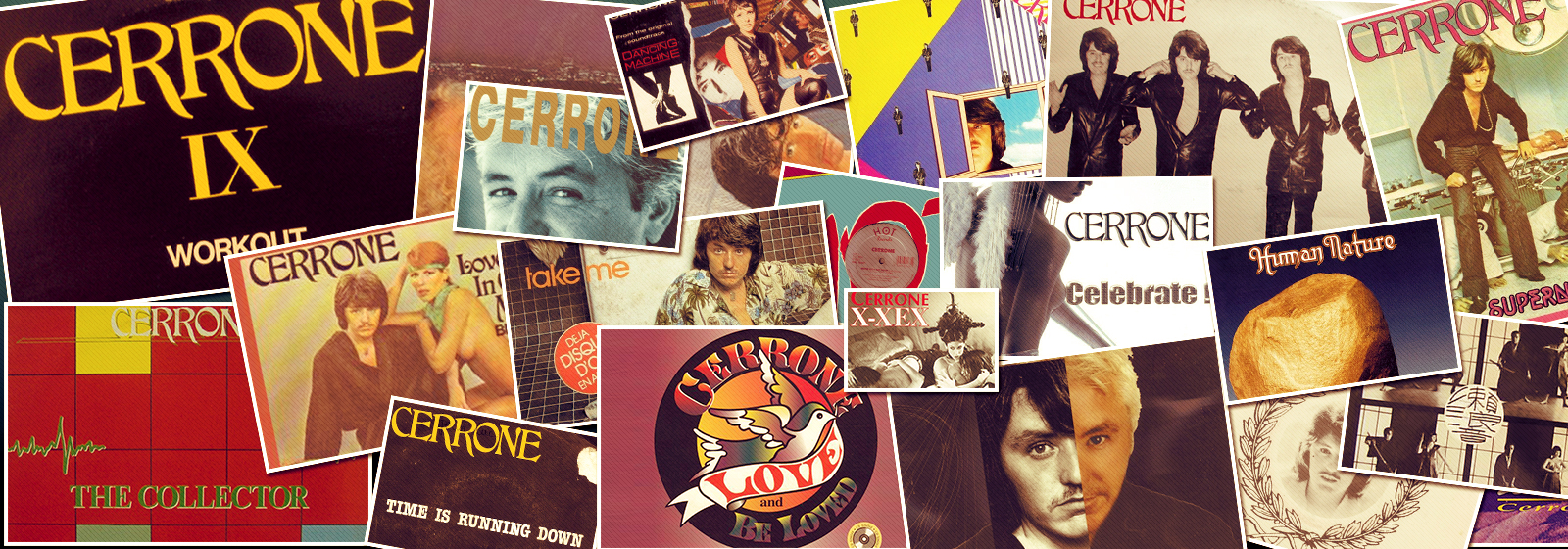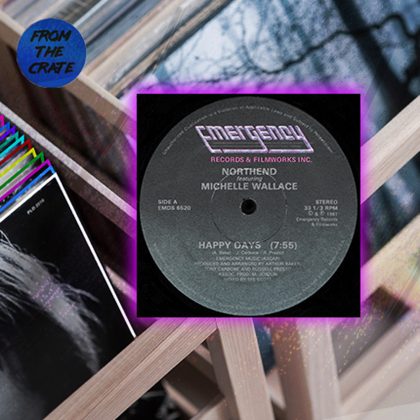Cerrone: The Disco King of Avant-Garde Sleaze

Have you ever had a friend come over to “console” you after a breakup, and instead he/she wound up fucking your brains out all night?
If you’ve heard the “Cerrone Funk” remix of pop sister trio Haim’s “If I Could Change Your Mind,” you’ll at least know what that sounds like. Haim’s original track, and in fact their whole Days Are Gone album, has received a lot of respectful, somewhat superfluous remixes in recent months by the likes of Marc Kinchen.
Well… awesome! But who, or what, is Cerrone? But only the Cerrone one (ironically, the only one NOT for sale) says anything new worth buying. It abandons the somber heartbreak tone of the original, adding brand-new horn riffs and funk hooks that make these girls’ lyrics sound dance-y and, yes, sexy in a way that even Giorgio Moroder’s cylon-infused treatment of another Haim song, “Forever,” failed to convey. Cerrone’s collaboration fearlessly meets near-genius with near-genius; it makes Haim’s original flavors melt in your mouth all over again, while still leaving you hungry for what else they might be capable of.
If you’re into the origins of EDM, you probably recognized the name Giorgio Moroder above: He is the Italian producer and electronic music pioneer who helped launch the career of Donna Summer amidst the bloops and bleeps of early synthesizers and drum machines. But nearly as important in the merging of disco’s dance energy with new wave’s electronic pulse was Marc Cerrone, the French drummer-turned-producer whose ‘70s club hits—released under the singularly sexy name “Cerrone”—flooded Europe (and, to a lesser extent, the US) with a dance beat that’s still familiar in the music of today.
Even if Cerrone had never started making music with synthesizers, he would still be important in the history of dance music for his focus on the simple, booming beat. While rock and roll, soul music, and R&B had always made a simpler 4/4 beat an important part of their musical language, disco’s floor-filling innovation was to ensure sure that beat literally never ended until the night was over.
Cerrone claims to have invented that concept of putting the kick drum, or bass drum, forward in the mix to do just that—even if it meant de-tethering the kick from the rest of the standard drum kit language and looping it as its own element, like a motif from the avant-classical world, or a madman’s idea of throbbing, rhythmic Zen. “Simpler simple beats” is a hard concept to take credit for; but a listen to his first big international hit, “Love in C Minor,” certainly shows that Cerrone could keep the kick drum loud, up-front and infectious.
Oops! We probably should have mentioned that the vocals in the clip above are totally NSFW. You see, in 1975, Giorgio Moroder and Donna Summer had begun a trend of over-the-top sexy disco songs when they released Donna Summer’s “Love to Love You Baby,” in which she backs up her soft soprano choruses with earthy, overtly sexual moans.
But “Love in C Minor,” released the following year, practically chides Summer’s hit for its subtlety. The full 16-minute version starts with a spoken word radio play, a conversation between a group of women at a bar discussing the size of a guy’s penis, among other pre-AIDS topics. Suddenly Cerrone’s signature kick drum beat comes in, and things quickly segue into a dance song featuring what sounds like six disco divas, clearly in the throes of sex, begging to a lover, “Don’t stop… keep it going… keep it going,” finally culminating in an orgasmic chorus of “Love me!”
With so much orgasmic distraction, you might not even notice how good the music is—a classic but not stereotypical disco song, with strings that don’t seem like generic orchestration, some good riffs, some funkiness, a recurring melody, and of course that pronounced 4/4 beat!
But it would be one year later that Cerrone would make his mark in a way that DJs and musicians from all musical genres are still referencing.
You’ve got to understand that by 1977, punk and new wave in the United States and the UK were well on their way. It was music that could be made from scratch in the kitchen sink; by comparison, the expensive arrangements and production costs of disco seemed bland, established, conformist. Not so in continental Europe, where the rebellion of rock music had never quite taken hold in the first place. And so, without any irony or sense of rebellion other than “Let’s see how Moroder likes them apples,” Cerrone released the futuristic sci-fi disco song to end all futuristic sci-fi disco songs: “Supernature.” Featuring lyrics by Lene Lovich (a quirky chanteuse who would go on to have some success in her own right on the American new wave scene a few years later), “Supernature” spoke of a scientific dystopia where multiple Frankensteins would rise up to punish us for making GMOs. The accompanying video looks like something out of an early Devo film.
In the modern era, we may speak of innovators like Kraftwerk or Derrick May with hushed tones. But Cerrone’s “Supernature” was a ‘70s record able to combine electronic beats with animal noises, spacey ricochets, and a science fiction nerd’s dream lyrics—all the while keeping things dance-y enough that it became a massive worldwide hit, including reaching #1 on the US Billboard Hot Dance Club Play chart. It was a success he would parlay into dozens of other dance-oriented electronic songs in the next few years, often with a healthy dose of sleaze that, again, predicted the sexual content of acid house and dubstep decades before their emergence.
Cerrone continued successfully to make quality albums into the ‘80s and ‘90s, some electronic-based, some classic disco and R&B. But by the mid-‘80s, music had caught up with him, and the innovations he’d help introduce to the masses were the norm.
In Europe, he’s continued to play to massive crowds, and for those in the know, he’s always been a secret influence: He’s been celebrated, sampled or covered by everyone from Daft Punk to Erasure to Run-DMC. But perhaps only now, in the new millennium, are we Americans ready to give him his due. In recent years, in New York and Los Angeles, he’s put on massive events to celebrate dance music’s history. And last May, he helped host a large, new dance party in Marrakesh—do you know how hard it is to celebrate hedonism in North Africa? For years, Cerrone has been an original disco sex machine—almost literally.
Today Cerrone released “2nd Chance,” a new video featuring Nigerian drummer, composer and songwriter Tony Allen. It’s the second video to come from Cerrone’s just released “Afro” EP via Because Music/Big Beat. Enjoy them both…
Perhaps this cultural comeback will be one in which we embrace his style, his throbbing beat production, and—who knows?—maybe even album covers featuring naked women who look like Jamie Lee Curtis.






